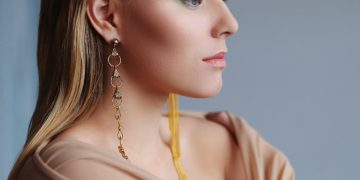The 1950s is widely regarded as a golden age of fashion. After World War II, the world saw a resurgence in prosperity and creativity, and nowhere was this more evident than in the fashion industry. Women’s and men’s fashion during this decade was characterized by glamour, sophistication, and a return to feminine elegance for women and refined masculinity for men. From the iconic poodle skirts and sharp suits to bold prints and accessories, the 1950s left an indelible mark on fashion that still influences modern trends today.
Table of Contents
The Influence of Post-War Prosperity on 1950s Fashion
Economic Boom and Its Impact on Fashion
After the rationing and austerity of the war years, the 1950s ushered in an era of economic growth. With increased disposable income, people were able to spend more on clothing. This led to an explosion of creativity in fashion, with designers and consumers alike embracing vibrant, luxurious fabrics and intricate designs.
The New Look by Christian Dior
Christian Dior’s “New Look,” introduced in 1947, heavily influenced the fashion of the 1950s. His designs emphasized a return to femininity with cinched waists, full skirts, and soft, rounded shoulders. This silhouette became synonymous with the 1950s, dominating both haute couture and everyday wear.
Women’s Fashion in the 1950s
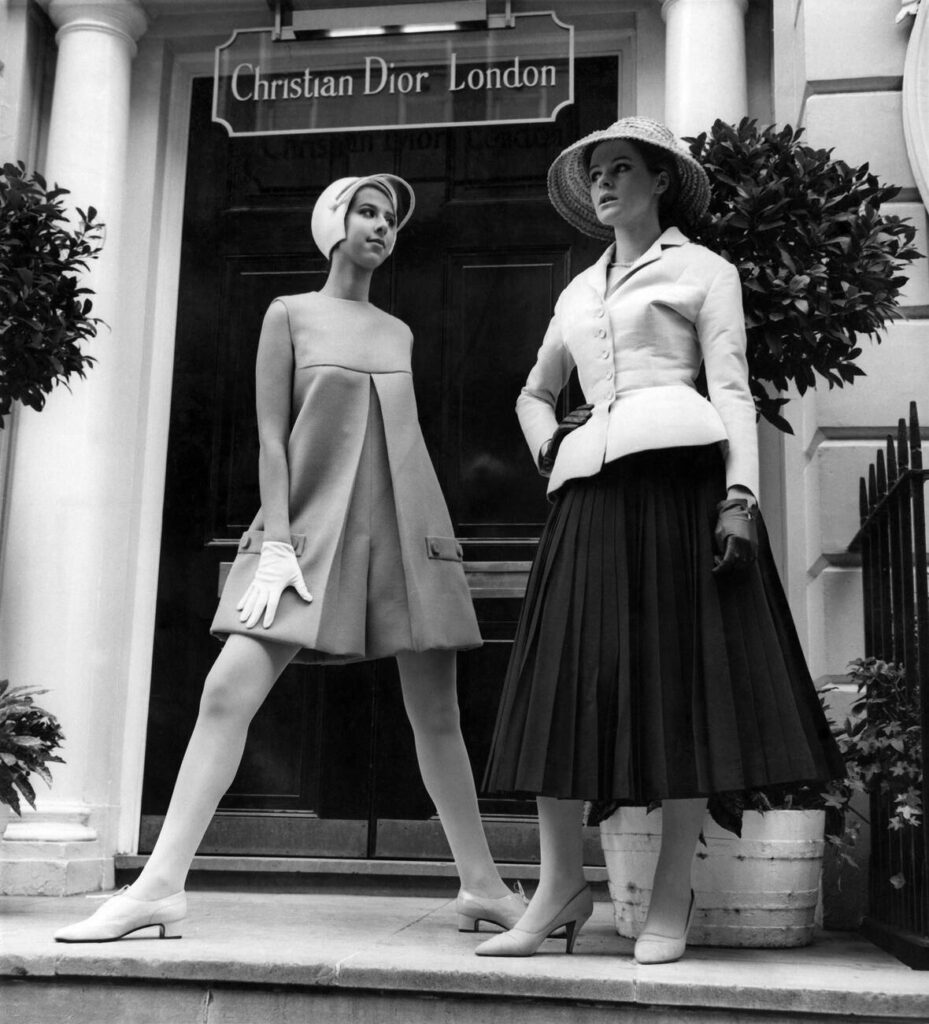
Dresses and Skirts: Full and Flattering
Women’s fashion in the 1950s was all about accentuating the hourglass figure. Full skirts that flared out from a tight waist were a staple, often supported by layers of petticoats to add volume. The poodle skirt, made famous by teenage girls, became an iconic symbol of youth fashion during this decade.
Blouses and Sweaters
To complement their skirts, women often wore fitted blouses or sweaters that emphasized the bust and waist. Sweater sets, which included a short-sleeved sweater with a matching cardigan, were particularly popular.
Evening Wear
Evening gowns in the 1950s were typically full-skirted and floor-length, often made from luxurious fabrics such as silk and satin. Off-the-shoulder styles and plunging necklines were favored for formal events, creating a dramatic and elegant look.
Casual Fashion: Capri Pants and Pedal Pushers
While skirts and dresses dominated women’s fashion, casual styles like capri pants and pedal pushers became popular for more relaxed settings. These styles allowed for greater freedom of movement while still maintaining a fashionable silhouette.
Men’s Fashion in the 1950s

The Classic Suit
Men’s fashion in the 1950s emphasized tailored, clean-cut styles. The classic suit, often in dark colors such as navy, gray, or brown, was a wardrobe staple for men. These suits featured broad shoulders and slim waists, a continuation of the military-influenced styles of the 1940s.
Casual Wear
For more casual occasions, men embraced the rise of sports jackets, cardigans, and patterned sweaters. The iconic “letterman jacket,” worn by athletes, also became a popular trend during this period, particularly among younger men.
The Influence of Hollywood
Hollywood actors such as James Dean and Marlon Brando had a significant influence on men’s fashion during the 1950s. Their rebellious, rugged looks, featuring leather jackets, jeans, and white T-shirts, became iconic and contributed to the rise of the “bad boy” image.
Iconic Fabrics and Patterns
Plaids and Polka Dots
Plaid and polka dot patterns were prevalent during the 1950s, often seen on skirts, dresses, and casual shirts. These bold, playful patterns reflected the optimistic and carefree spirit of the decade.
Gingham
Gingham, a checkered pattern, was another popular fabric choice. It was frequently used for dresses, blouses, and summer wear, embodying a wholesome and fresh look.
The Role of Accessories in 1950s Fashion
Gloves
No 1950s outfit was complete without a pair of gloves. Women often wore short, wrist-length gloves for daytime wear, while longer, elbow-length gloves were reserved for evening events.
Hats
Hats were another essential accessory. For women, small, stylish hats adorned with feathers or veils were the perfect complement to their outfits. Men, on the other hand, often wore fedoras or trilby hats to complete their polished looks.
Shoes
High-heeled pumps were a must-have for women, typically in neutral tones to match their outfits. For men, leather shoes in brown or black were the standard, with polished oxfords being a popular choice for formal occasions.
The Impact of Hollywood on 1950s Fashion
Marilyn Monroe: The Fashion Icon
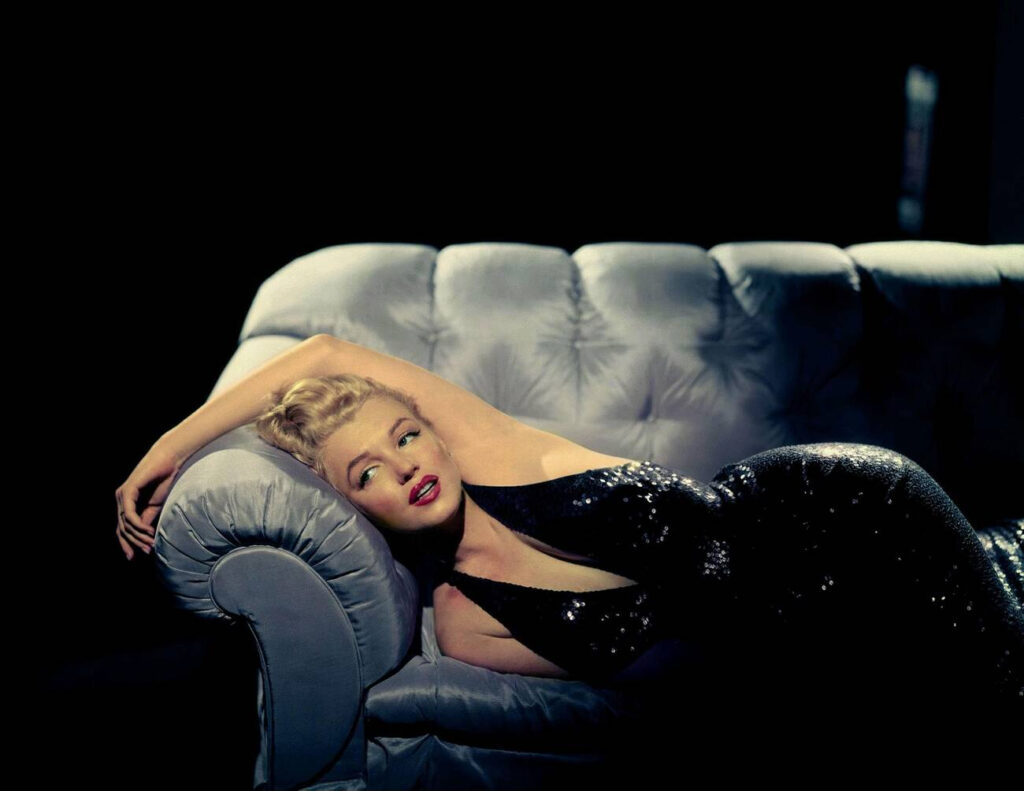
Marilyn Monroe became a style icon in the 1950s, known for her glamorous, figure-hugging dresses and elegant accessories. Her sultry, feminine style was emulated by women around the world.
Audrey Hepburn’s Influence
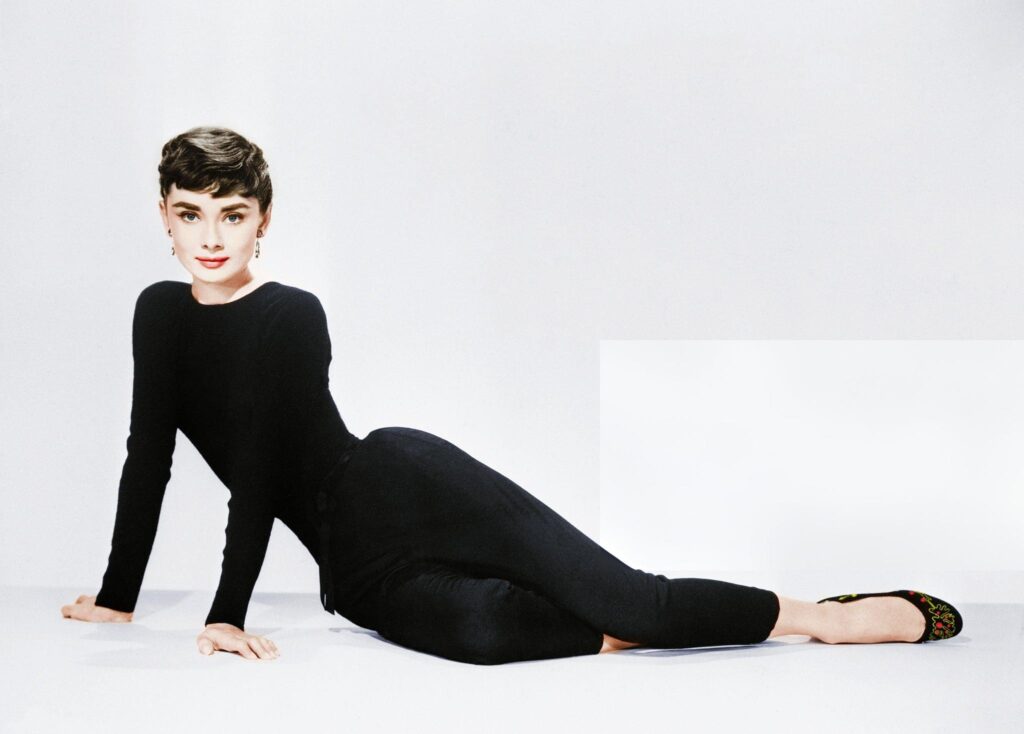
Audrey Hepburn, with her slim, chic figure, popularized more minimalist styles. Her role in the film “Sabrina” made the little black dress a fashion staple, and her style remains influential to this day.
James Dean and the Rebel Look
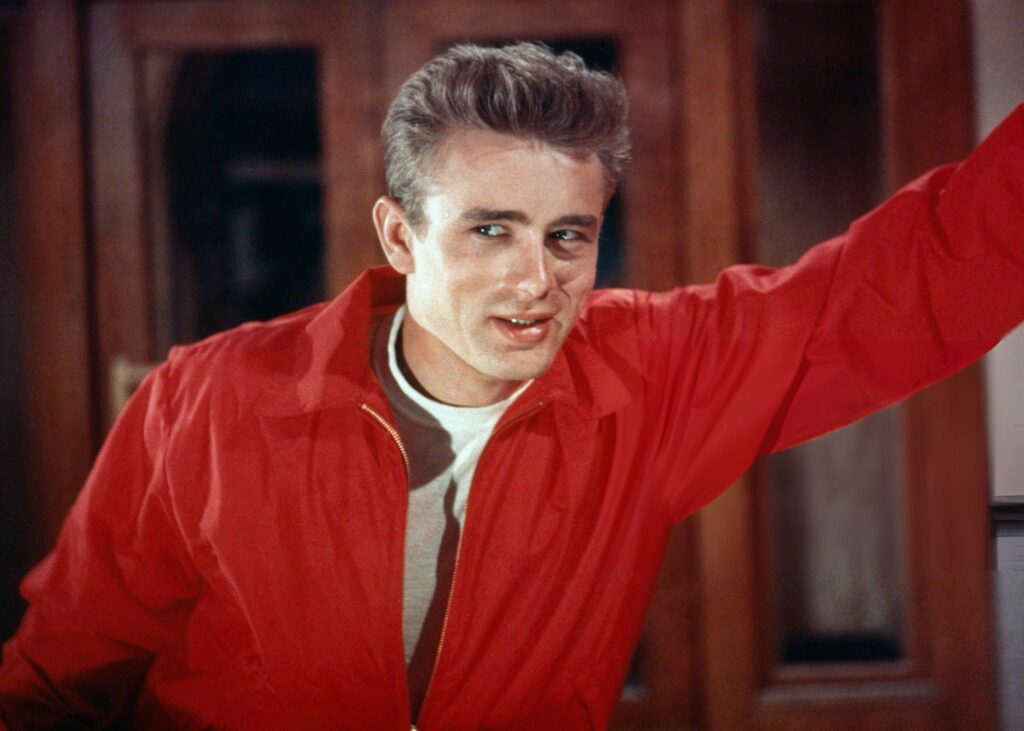
James Dean’s portrayal of the rebellious youth in “Rebel Without a Cause” had a lasting impact on men’s fashion. His leather jacket and jeans ensemble became synonymous with the cool, rebellious look of the era.
Youth Fashion and the Rise of Teen Culture
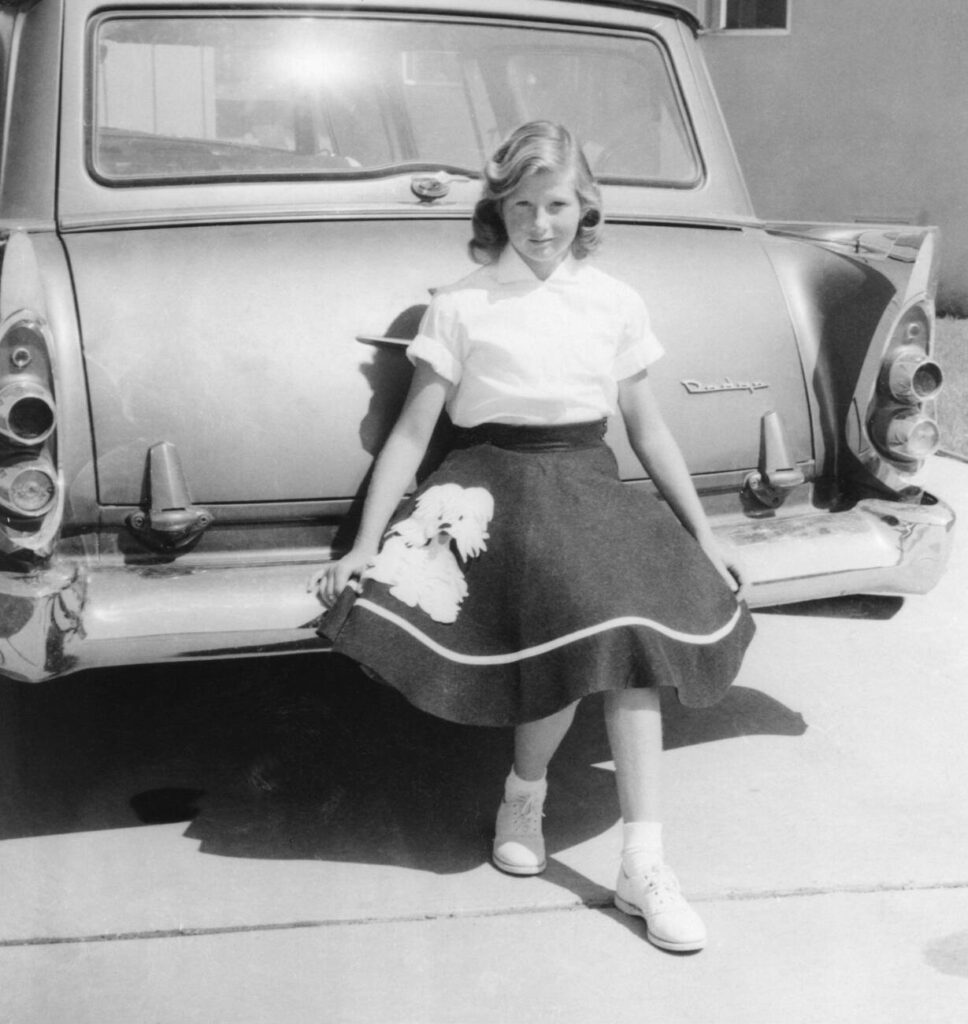
Poodle Skirts and Saddle Shoes
The 1950s saw the emergence of distinct youth fashion, particularly among teenage girls. The poodle skirt, paired with saddle shoes, became a popular choice for young women. This playful, whimsical style was a reflection of the newfound freedom and prosperity of the post-war years.
The T-shirt Revolution
For young men, the plain white T-shirt became a symbol of rebellion, thanks in large part to actors like James Dean. Paired with jeans and a leather jacket, this simple outfit became an iconic look for teenagers during the 1950s.
The Fashion Houses of the 1950s
Christian Dior
As previously mentioned, Dior’s “New Look” set the tone for women’s fashion in the 1950s. His couture house continued to be a dominant force in fashion throughout the decade.
Coco Chanel
Coco Chanel made a triumphant return to the fashion world in the 1950s, introducing her signature tweed suits and simple, elegant designs. Her creations were a stark contrast to the more extravagant styles of the time, offering women a chic, comfortable alternative.
Fashion Icons of the 1950s
Grace Kelly
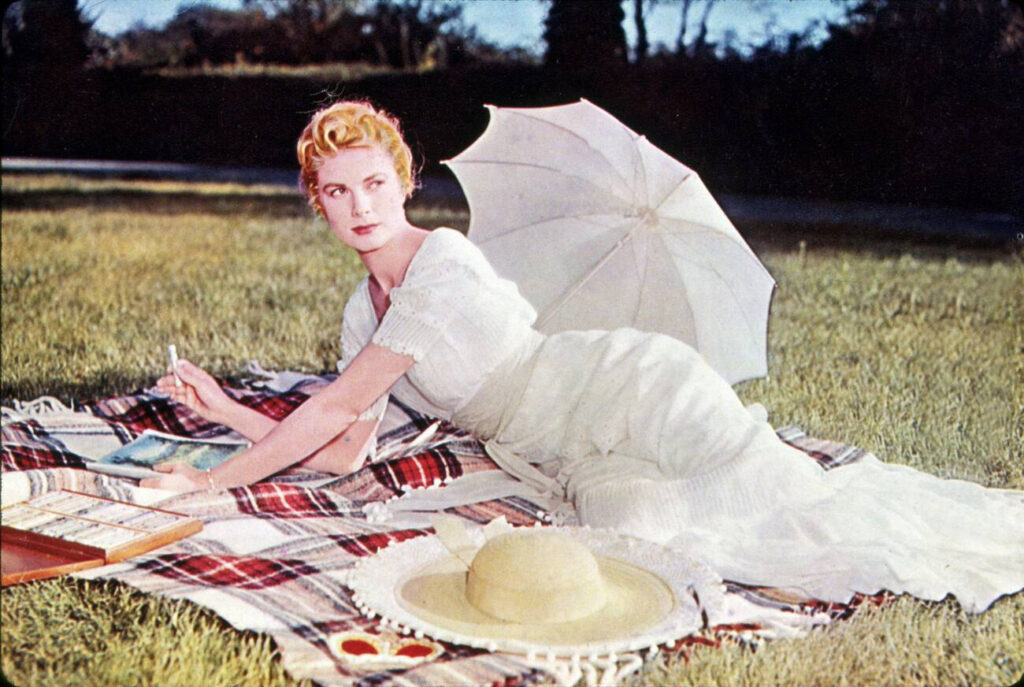
Grace Kelly’s timeless elegance made her one of the most influential fashion icons of the decade. Her classic, sophisticated style, often featuring tailored dresses and pearls, set a standard for women of the era.
Elvis Presley

Elvis Presley’s bold, flashy style revolutionized men’s fashion in the 1950s. His signature pompadour hairstyle, colorful suits, and rock-and-roll attitude made him a fashion icon for men and teenagers alike.
Legacy of 1950s Fashion in Modern Style
The Enduring Appeal of 1950s Silhouettes
The hourglass silhouettes and elegant styles of the 1950s continue to inspire modern fashion designers. Full skirts, cinched waists, and fitted blouses remain popular, particularly in vintage-inspired collections.
The Retro Revival
Vintage clothing from the 1950s has seen a resurgence in recent years, with fashion enthusiasts embracing the bold prints, classic cuts, and timeless elegance of the era. Many modern brands incorporate 1950s elements into their designs, creating a fusion of old and new.
Conclusion
The 1950s was a decade of unparalleled fashion innovation. From Christian Dior’s “New Look” to the rebellious styles of James Dean, the trends of this era reflected a society in transition. With its emphasis on glamour, femininity, and individuality, 1950s fashion has left a lasting legacy that continues to influence modern style. Whether through vintage revivals or contemporary reinterpretations, the elegance and creativity of this decade remain as relevant today as they were over half a century ago. For more Fashion Blogs and News Visit Glamour Script Home Page !
FAQs
1. What was the most iconic dress style of the 1950s Fashion?
The most iconic dress style of the 1950s was the full-skirted, cinched-waist silhouette, popularized by Christian Dior’s “New Look.” This style accentuated the hourglass figure and became a staple in women’s fashion.
2. How did men dress casually in the 1950s?
For casual wear, men often opted for cardigans, patterned sweaters, and sports jackets. The leather jacket and jeans combination also became iconic, thanks to Hollywood stars like James Dean.
3. What were popular accessories for women in the 1950s?
Popular accessories forwere gloves, hats, and pearls. Gloves were worn in both short and long lengths, depending on the occasion, while stylish hats adorned with feathers or veils were common for women’s daytime looks. Pearls were often worn as necklaces or earrings, adding a touch of sophistication to any outfit.
4. Who were the biggest fashion icons of the 1950s?
Some of the biggest fashion icons of the 1950s included Marilyn Monroe, Audrey Hepburn, Grace Kelly, and Elvis Presley. Each had a distinctive style that influenced both men’s and women’s fashion throughout the decade.
5. How has 1950s fashion influenced modern trends?
1950s fashion continues to inspire modern designers, especially in the realms of vintage and retro fashion. Elements like full skirts, fitted blouses, and tailored suits have made a comeback in recent years, while celebrities and fashion enthusiasts often embrace the timeless elegance of 1950s silhouettes and styles.






































